What Caused the Collapse of Silicon Valley Bank?
You can listen to an audio summary of this article below.
Silicon Valley Bank (SVB) collapsed and was then seized by the California Department of Financial Protection on Friday, March 10. This came after a frenetic two days, when the bank announced a big loss, tried to raise capital, and then faced an accelerating run-on-the-bank. Customers tried to withdraw about a quarter of the total deposits on Thursday alone.
The regulator said the bank was in sound financial condition on Wednesday(!) two days before they shut down the bank. Moody’s also rated the bank investment grade until it was shut down.
What the Problem Wasn’t
One idea, which I see expressed in frustrated tweets on Twitter by mainstream finance and asset management professionals, is that the bank management is incompetent, that the risk department was asleep at the helm. If this is true, then the same stupidity/negligence occurred at a major ratings agency and a regulatory agency. This theory does not stand up to scrutiny. This is not necessarily to say that SVB couldn’t have managed its portfolio differently. Rather, the issue is not individual stupidity but systemic blindness. We’ll get to this in a bit.
Another idea, expressed often in frustrated tweets by alternative assets people (read gold and bitcoin) is that the root of the problem is fractional reserve banking (FRB). The old axes come out for grinding. One, FRB is a simple fraud where a bank takes $1 in deposit and lends $10–$9 more than it has. Two, that a FRB bank is always insolvent, and it’s times like now which reveal the problem. Three, that regulators should ban FRB, that people should seek simple warehouses for their cash and not be creditors, which of course draws out the “bitcoin fixes this” comments.
These criticisms of FRB are as facile as the criticisms of SVB’s management.
The root cause of SVB (and other bank failures) is something else. It lies somewhere else. And it’s much scarier than hoping the problem is unique to SVB.
The Beginning of the End
Where should one begin? At the very beginning. I promise to include only those details necessary to properly understand SVB.
At its root, a bank pays interest to attract deposits, to finance its purchase of instruments that pay a higher rate. In other words, if the bank is paying 2% to depositors and earning 3% average on its portfolio, it earns for itself a spread of 1%. If it has 100 million ounces of gold worth of assets and liabilities on its balance sheet (about the size of SVB, stated in gold terms), then it earns a gross profit of 1 million ounces. It must pay rent, payroll, and other expenses. The net profit would be lower, perhaps 250 thousand ounces. Not bad.
It’s a simple business, provided the bank knows what to invest in. We will get back to this point.
Enter, government intrusion. From the time of America’s Founding, you needed an Act of Congress to obtain permission to open a bank. Back then, you could enter any business from farming to food service to medicine to manufacturing without permission. But a bank needed permission, and not just from a regulator, but from Congress. This was a highly political and politicized process. One can only imagine the special favors would-be bankers had to offer to Congressmen: hiring the politicians’ useless sons, doing businesses with his cronies, paying campaign contributions—and what assets the bank would buy with its depositors’ money.
“Free” Banking
The so-called “free banking” period, which began around 1837, was intended to change this. You no longer needed a charter from Congress. Now you got it from state regulators, whom you had to please. Some of the conditions included that you would not open multiple branches, and that you would buy lots of state government bonds. The prohibition on branching forced banks to concentrate their risk (an issue with SVB, as we shall see), not to mention buying the bonds of profligate-spending states who defaulted when they felt like it.
In both eras, the government forced banks to buy assets that were not prudent to buy. Lots of bank failures occurred as a result. These, of course, are blamed on the wild west and the anarchy of free markets. This attitude persists through the centuries. Thus, in 2008, many strident voices blamed the crisis on lack of regulation. The result was to burden an already-regulated industry with a new load of regulation imposed by Dodd-Frank, in 2010. And now in the wake of SVB, strident voices are already saying that current regulation is insufficient, that it was written by bankers hence inadequate, etc.
Debt Squeeze
Back to our brief history lesson. After the civil war, banks that wanted to issue currency notes got national charters. The national charter came with strings attached. You guessed it, the bank had to load itself up with Treasury bonds. The Treasury did not default, but it did something else. It began to pay down its debt, which meant the allowable backing for currency was decreasing, which meant the currency supply had to shrink. This made it harder to get your hands on currency, which put the squeeze on debtors who need it to service their debts. If debtors are squeezed enough, then they begin to default, which harms the banks.
Banks have been hampered from the very beginning, forced not to act reasonably (by definition, when forced by the government, one is not acting on reason) or prudently. They have been forced to buy assets they would not wish to buy, forced not to diversify when they wished to diversify, forced to shrink the currency in circulation when faced with growing demand for more currency, and many other perverse behaviors.
Perverse behaviors lead to perverse outcomes. Panics and depressions ensued.
The Politicization of Credit
A particularly nasty (by the quaint standards of those halcyon days) panic occurred in 1907. John Pierpont Morgan led a group of bankers to resolve the crisis. This led many to resent the man, but not seek to understand the root cause. This incident was used to justify the creation of the Federal Reserve in 1913. They wanted a socialist agency, not profit-seeking individuals, to resolve crises.
After that, credit was politicized, and the rate it was to be expanded was to be decided by central planners. This caused a false boom in the 1920’s, followed by a bust in 1929. Naturally, the fix decided by a politician—President Roosevelt—was to remove money from the banking system entirely. US citizens were no longer allowed to withdraw their deposits from the banks. (They were not allowed to own gold at all, until 1975, when gold was no longer relevant to currency, interest rates, and banking).
The Wrong Way to Stop Bank Runs
What an incredible distortion! It may have fixed the problem of bank runs. If one can’t withdraw one’s money, then there is no way to run on the banking system. There can be a run on one particular bank if people want to move their deposits to another bank. But not a run on the system as a whole. Today, you can buy gold. But this is not a withdrawal of capital from a bank and does not cause a bank to sell an asset to pay back your gold. You’re just exchanging bank credit with a third party.
I say, “may have fixed”, with fix in italics, because this is not a sustainable solution. Think of pressure building in a system, such as a magma chamber deep in the earth’s crust. If there are vents to release the pressure, such as a system of volcanoes that can spew lava, then there is no systemic crisis. However, the locals may not want the constant eruptions. Suppose they could plug all the vents. Then the pressure would build and build. Until *BOOM!* You get Krakatoa, which spews trillions of cubic meters of debris into the stratosphere, obliterating summer for a few years. Not to mention, it kills everyone within a few hundred miles.
Forcing banks to buy the wrong assets heats up the magma. Making the dollar irredeemable is plugging the vents. There have been blow-ups including 1987, 1998, 2001, 2008, and 2020. But the monetary Krakatoa has not happened yet. When it does, you won’t need an article from me to know about it!
The “Normal” State of Affairs
After Roosevelt’s Act in 1933, everyone was forced to treat Treasury securities as the most conservative thing they could own. They have to treat government credit as if it were money (which is no doubt very convenient for politicians, happy to find spending opportunities for all the credit the government attracts under this regime).
The Fed destabilized the interest rate (ironic, as the propaganda used to sell it claimed it would smooth out the business cycle, which was assumed to be intrinsic to free markets). The destabilization kicked into high gear with the dollar being made irredeemable to American citizens in 1933, and into overdrive when Nixon made it irredeemable even to foreign central banks in 1971.
So we take it as normal, that interest rates gyrate. They can shoot the moon as they did through 1981. They can fall, endlessly, as they do after 1981 (this trend is not finished), and they went negative in Switzerland, Germany, the UK, Japan, and other countries. Negative! That is, you pay them to lend to them! But I digress again.
Deposits Guaranteed!
Another historical anomaly exists that everyone takes for granted, but which factors into our analysis. The government guarantees deposits (at least up to a certain amount). This is the mother of all perverse incentives. It was created to allegedly alleviate the anxiety around the ever-present events of default. Instead, it is another volcano-binding agent. One of the most powerful ways to plug the vents that seek to release pressure coming up from deep within the monetary earth.
It now seems that depositors of SVB may take no losses, even on deposits above the $250,000 deposit guarantee. While I sympathize with depositors, and I can imagine myself in their position, as an economist I can see what perversity this will cause. It will remove any differentiation between shaky and solid financial institutions.
We have a banking system that can ignore the preferences of depositors—depositors are trapped. It is forced to invest deposits in the wrong assets. But don’t worry, depositors, if it blows up then the government will bail you out!
Interest Rate Binges
The final factor is the current cycle of the Fed. The Fed alternates between long binges, when rates are falling, and short, sharp purges when the Fed hikes rates. Like right now.
When rates are falling, this is the same as saying bond prices are rising. By a process of arbitrage, prices of other assets are lifted as well. Leverage increases across the financial system, as rising asset prices both enable and demand more borrowing to buy more assets.
At the same time, the return on capital falls. Suppose Acme Retailer makes $1,000,000 a year. The valuation is $10,000,000, which means the buyer earns a 10% return on capital. But then the interest rate falls. Now Acme is worth $25,000,000. The return on capital is reduced to 4%. This is fine if you are borrowing at 3% to finance the asset. But what do you do when the Fed hikes to 5%?
You must de-lever. And everyone else too.
Vanishing Capital and Realizing Loss
Oh, almost forgot. In 2009, they changed the accounting rules. No longer do banks need to “mark assets to market”, that is recognize a loss on their books when asset prices drop. Which occurs when the Fed hikes interest rates. No, now they can declare that the assets are “held to maturity”, which is more of a hope than a fact. In fact, they may be forced to sell. Then they realize the loss. And everyone from ratings agencies to regulators scratch their heads. Capital seemingly vanished—what happened?!
It was fictitious capital, created by the prior Fed binge cycle. Everyone knows that the Fed cannot print wealth. But they see rising asset prices as an increase in capital values.
When the Fed purges, this capital vanishes even faster than it was conjured. The liabilities, however, do not. They remain—and now the interest expense to service them goes up.
Rhetoric vs Reality
Mainstream rhetoric about the 2008 crisis ascribes it to real estate, or subprime mortgages. Those with ideological bent assert that it is lack of regulation(!) that caused it. As I have been describing, banks are utterly dominated by the state in every aspect! The lack of government interference does not exist in banking.
In this light, let’s look at Silicon Valley Bank (SVB).
Due For a Bust
In 2020, arguably the economy was due for a bust after the long boom that had run from 2009-2019. But then, the government reacted to a virus by locking down the economy. Tens of millions of people were forcibly laid off. Hundreds of millions of square feet of office space, and hundreds of millions more of retail, food service, hospitality, and airports were turned into mausoleums overnight. The economic wreckage is incalculable.
Something had to be done! And man, did Congress and President Trump do it! On top of the trillion dollar plus deficit the government was already running, they passed the CARES Act and then a supplement. This added $2.8 trillion dollars more spending. Which means issuing $2.8 trillion more Treasurys.
The Fed was accommodative. In addition, investors were faced with a choice to either put their money into businesses that were suddenly dead (like Hertz), or Treasury bonds. In a crisis, people turn to a principle believed to have been expressed by Mark Twain: they are more concerned with the return of their capital than with the return on their capital. So, they piled into Treasury bonds. By summer of 2020, the yield on a 10-year Treasury had hit a low of 0.57%.
“Risk Free” vs Duration Risk
During this time, startups in Silicon Valley were able to raise massive amounts of capital. Many of them deposited it into SVB. SVB’s deposits doubled, then doubled again. What was SVB supposed to do with the cash under such circumstances? Largely, it seems to have bought Treasurys and mortgages. The government, after 2009, guarantees most mortgages. So these investments are deemed “risk free” by conventional analysis.
Except bankers should know about duration risk. This is the risk that the market price of an asset may drop, or the market could even go no-bid. This should be of particular concern to a bank that funds these assets using demand deposits. Think of it this way. You borrow money for one day, but you buy a 10-year bond. Tomorrow, instead of repaying the loan—you cannot repay it—you roll it over. You take out a new loan, at whatever the new rate is for that day. And you keep doing this, a total 3,650 times. At the end, you finally repay the loan because the bond matures, and the Treasury repays you.
Most would scoff at this. “Bah! You don’t have to wait for the bond to mature—you just sell it if you need the cash!” This presumes that the market price will always be greater or equal to the price you paid.
For SVB, it was not. The Fed is hiking rates, remember?
Startups vs Rate Hikes vs Bank Outflows
This is one prong of the pincer. The other prong is that the Silicon Valley startups who had been raising so much cash during the binge years, were not raising so much during the purge. Higher interest rates pinch them, too. Many of those companies are cash-flow negative. That is, they are spending cash on net.
SVB had a slow-motion run, not because anyone thought that it was failing, but because its depositors were spending. Due to its unique position, the payees of this cash were not mostly SVB customers. If, for example, 100,000 customers of Chase spent money, many of the recipients would deposit it right back with Chase. If customers of other banks were also spending, Chase would not see a net outflow.
SVB was different. It had net outflows. So it was forced to sell Treasurys because they are the most liquid. And mortgages, apparently, too. All of a sudden, the theoretical mark-to-market losses become realized. If they bought a bond for $1,000,000 in 2020 and now sold it for $800,000, they really lost $200,000 of capital, or 20%.
In 2020, SVB had growing inflows of cash and was forced to buy bonds at historic low yields / high prices. In the second half of 2022, and early 2023, SVB had growing outflows and was forced to sell bonds at higher yields / low prices.
Where Was the Risk Management Team?
Yes, I am aware of the quibble that they weren’t forced, that their risk management team should have said “no”. SVB, like any bank, is supervised by government officials. This is not merely regulation; government officials actually order banks around based on “macroprudential” (and other) considerations. Banks do not necessarily have discretion over what to buy. This is apart from the question of what assets they would invest in, if not Treasury bonds. They need to get a yield on their assets that is greater than the cost of their deposits including the overhead of administering the program, employing people, etc. No one, not even a bank, is above or outside the market. If you have deposit inflows in 2020, then you buy what’s available at that time. You are a price-taker.
There may be one other synergistic force. Rates on Treasurys have risen considerably. But rates on bank deposits, not so much. Perhaps, this is because banks are trying to make up the lost capital of rising rates by not paying depositors anywhere near what they are now getting. The result is that many companies were seeking an easy way to sweep their cash balances out of accounts paying 0.1% and into the Treasury Bill market which is currently paying 4.8% on a 1-month bill and 5.2% on a 6-month.
It is somewhat ironic that a Silicon Valley startup, Brex, offered it. Brex offers Silicon Valley (and other companies) a cash management solution that may have pulled some of the deposits out of SVB.
The Marginal Bank Failure
Change occurs at the margin. That’s how economies work. The marginal worker is the first to be unemployed, if conditions change. The marginal firm is the first to go under. The marginal debtor is the first to default.
SVB was the marginal bank, the one which failed first (let’s ignore Silvergate, as its failure seems more due to its exposure to the crypto space). It was the marginal bank due to its unique flows, first inbound at the wrong time and massive size, and then outbound at the wrong time and even faster. Additionally, it may have made some bad risk management decisions.
However, the same forces are operating on all other banks. I assume they all had deposit growth during the stimulus of 2020-2021. They all must be experiencing deposit outflows now, as the Fed has shrunk the M0 measure of the quantity of dollars from $6.4 trillion in December 2021 to $5.3 as of this January. This is a staggering decline of 16%. M0 includes bank deposits, and we do not assume that the number of printed pieces of paper would change much (it’s not a big component anymore, anyways).
Another problem faced by the banks is that their average return across the portfolio is nowhere near the rates offered in the market today. In other words, marginal return > average bank return. Even if the banks weren’t trying to recapitalize themselves by offering low interest rates and earning higher rates, they would not be able to offer anywhere near the current market rate.
They are all subject to being disrupted by Brex.
Who Will Fall Next?
Sweeping cash into Treasury Bills is essentially Fed-arbitrage. Now that rates are dramatically higher, but banks cannot and will not match them, savers want to move their balances and earn the current, higher market rate. This arbitrage would not exist in a stable monetary system, based on gold. It may not even exist when rates plummet again (as they must). But for now, it will be hoovering deposits out of the banks. Which is the next marginal bank?
The collapse of SVB is hitting Silicon Valley startups hard. They generally have far in excess of the $250,000 FDIC guarantee limit. So they may be facing either ruinous losses and/or a protracted delay in getting their funds. Meanwhile, they have to make payroll, pay vendors, and keep operating. If they can’t get their cash out, they face immediate bankruptcy. Roku, the video streaming company, has said it has about half a billion dollars—a quarter of its total cash—in SVB.
A 30% Haircut?
I have already read about one company offering to buy those deposits at a 30% discount. What a bitter pill! Either risk total loss of, say, $10,000,000 cash in the bank which you rely on to operate and grow your company—or else make the loss definite at $3,000,000 but then you have certainty of $7,000,000 to keep going.
Many people talk about “contagion” effects when a bank collapses (the Treasury and Fed officials seem to be denying that there is any systemic risk here). This is one way that it occurs. Those who suffer losses must either cease operations or dramatically reduce them. Layoffs are coming to any startup that has to accept a 30% discount on its cash!
Systemic Risk
There are other ways. There are many other banks that may have some elements of the SVB story. Other specialty banks, and community banks may have had inflows during covid and outflows now. Depositors must be warily looking at them, wondering if it is better to be prudent and move their cash to a Too-Big-to-Fail bank, while they still can. Even if they are wrong initially, such outflows will collapse the bank in the end.
Such contagion is not due to Fractional Reserve Banking per se. It is more a product of duration mismatch, after a long period of buying assets at low yields / high prices then a period of higher yields / lower asset prices, hence unrealized losses.
The Root Cause
The root cause of the collapse of SVB was not stupidity at the bank, insufficient regulation, or corruption at the ratings agencies. The root cause is government interference in money and credit, especially including its irredeemable currency which necessarily inflicts interest rate instability upon the world.
The regime of irredeemable currency is enormously destructive.
During periods when interest rates are falling, most people love it. Who would dislike endless bull markets and hence capital gains, and rising transaction volumes, and hence profits for investment banks? Economists praise it as a “strong economy.”
The economy was not strong. It was in a false boom, during the Fed’s binge phase. When the Fed went into purge mode, the boom turns to bust (this is starting to happen, but not fully realized yet). In the bust, banks fail, depositors lose their cash, etc. And the pressure grows to bail everyone out, thus leaping back into binge mode and another boom phase.
That volcano gets more and more clogged.
Will Gold Shine Now?
As always, crises like this led to the question of whither the gold price?
There will certainly be sellers of gold, especially those who are forced by losses, or at least liquidity problems, to sell whatever they can to raise cash. However, something bigger is likely going on now.
Everyone in the market has to think about an unpleasant reality and come to grips with it. They have to consider the risks of things that previously they may have thought absolutely safe. Such as bank deposits, and Treasury bonds (and government-guaranteed mortgages).
This line of thinking has but one destination. Gold is the financial asset that is not the liability of a suddenly-not-risk-free counterparty such as a bank. People will increasingly turn to gold.
And for those who prefer a yield on their gold versus paying storage costs, Monetary Metals offers an attractive proposition.
During covid, Monetary Metals experienced a big increase in clients and gold coming to our program. I said at the time, that I am happy for growth but would not wish harm on the world in order to get it. I now find myself in the same position. What happened to SVB, and may happen to other banks, and what’s happening to depositors totally sucks. I wish it could be otherwise, with all of my heart.
However, regardless of my wishes or anyone’s wishes, it is what it is.
This is the raison d’etre of Monetary Metals. To provide an off-ramp from the unstable interest rate, destabilized banking system, and mad irredeemable currency. A way to save and earn in gold and compound one’s wealth via earning a fair and reasonable interest rate.
If you have concerns about how the fallout of SVB may impact you, please give us a call or an email.
Additional Resources for Earning Interest on Gold
If you’d like to learn more about how to earn interest on gold with Monetary Metals, check out the following resources:
In this paper we look at how conventional gold holdings stack up to Monetary Metals Investments, which offer a Yield on Gold, Paid in Gold®. We compare retail coins, vault storage, the popular ETF – GLD, and mining stocks against Monetary Metals’ True Gold Leases.
The Case for Gold Yield in Investment Portfolios
Adding gold to a diversified portfolio of assets reduces volatility and increases returns. But how much and what about the ongoing costs? What changes when gold pays a yield? This paper answers those questions using data going back to 1972.


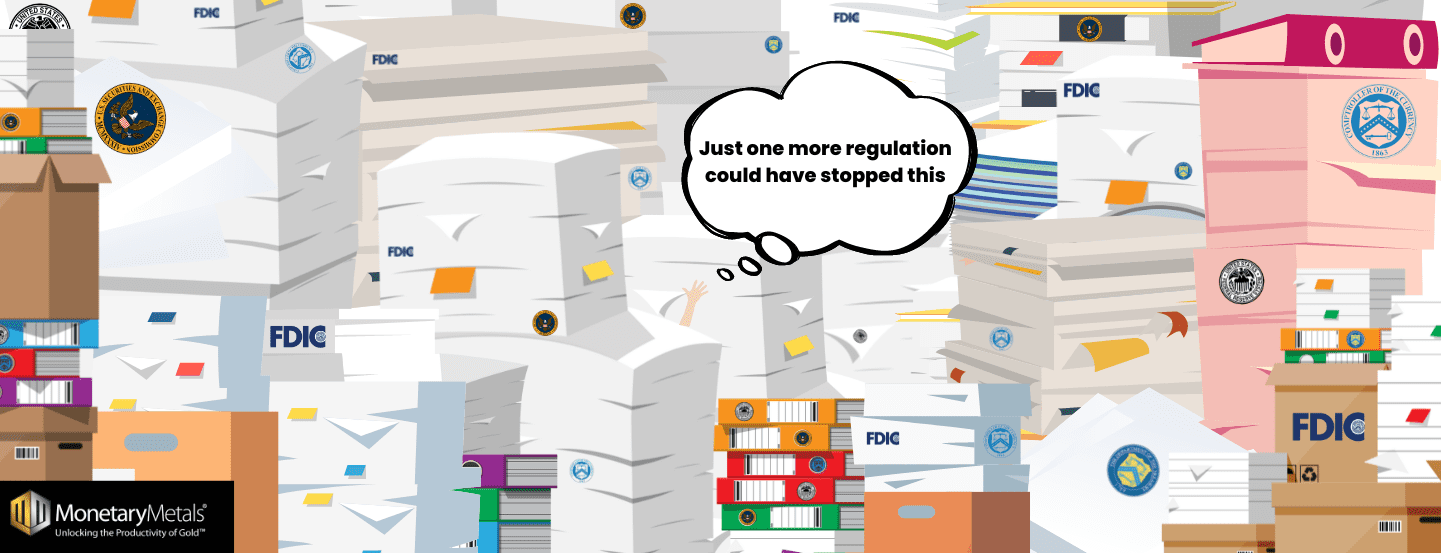
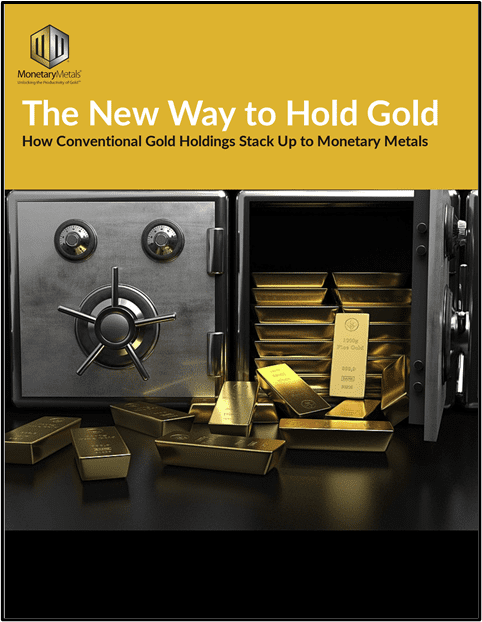
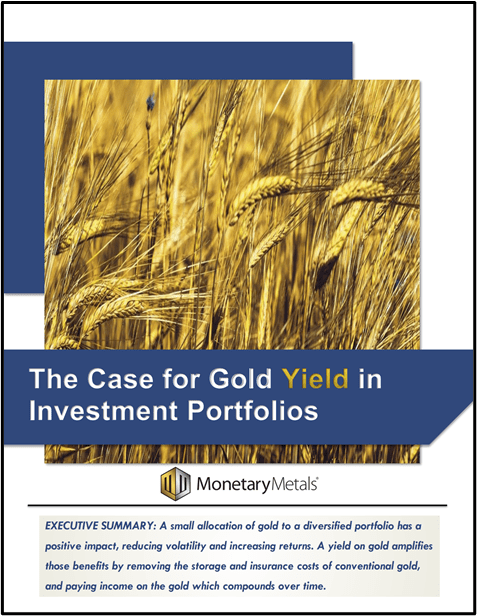


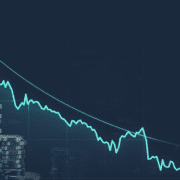
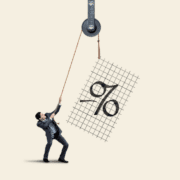



Excellent, I rely on you to cut through the noise. Thank you
Another outstanding article, thank you.
Excellent as always. Thank you.